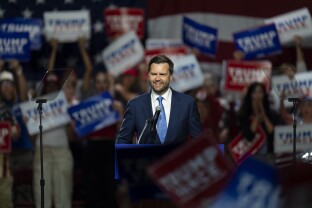OVER ARIZONA — A potential second Trump presidency would likely have familiar issues in the spotlight: border and immigration policy, tax policy and the fate of Obamacare.
How exactly Donald Trump plans to deal with those issues is vague at best. His running mate, Sen. JD Vance, is now trying to fill in some gaps, sometimes in ways that differ from Trump’s own fluctuating positions.
In an interview with NOTUS this week, Vance detailed his views on the Child Tax Credit, the border wall and the health care law Trump tried and failed to repeal during his presidency.
